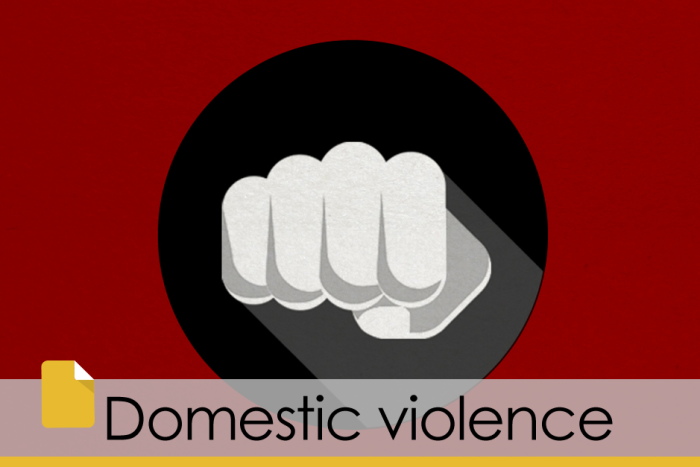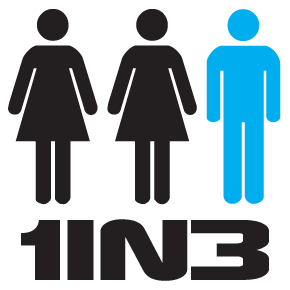ABC Fact Check corrects Fact File on Domestic violence in Australia

Recently the ABC's Fact Check program published a Fact File on Domestic violence in Australia. The Fact File directly addresses the One in Three Campaign's claim that one in three victims of family violence is male.
One in Three responded to Fact Check via their website and Facebook page, and Fact Check are to be congratulated for amending their Fact File soon afterwards.
They published our critique in full on their website at www.abc.net.au/news/2016-04-12/domestic-violence-one-in-three-respond/7315552, which reads as follows:
"One in Three" responds to Fact Check's domestic violence fact file
Updated Fri at 11:17am
On April 6, 2016, ABC Fact Check published a fact file exploring the issue of domestic violence, which pulled apart the statistics to determine what they do and do not say.
Statistics quoted by advocacy group "One in Three", who seek to highlight that one in three victims of domestic violence are male, were included in Fact Check's analysis.
One in Three posted the following comment on Fact Check's Facebook page.
In response, Fact Check changed One in Three's description to reflect its advocacy of men and boys who are victims of domestic violence, rather than just men. Fact Check also changed the words "men" and "women" to "male" and "female" where appropriate.
One in Three's response
This is an excellent analysis of the current data on domestic and family violence.
We are concerned, however, about a number of possible problems with the data as presented.
You state that "Fact Check has based this analysis on the broad definition of domestic violence to include all violent, threatening or controlling behaviour that affects intimate partners who may or may not be living together, and other family members and carers." You then, however, go on to present almost exclusively data on intimate partners who may or may not be living together. Where is the data on other family members and carers? You state, "The "One in Three" campaign is a group of diverse advocates who raise awareness of male victims of domestic violence". This is roughly accurate, if you use the terms "domestic violence" and "family violence" synonymously, however it would be more accurate to state that "The "One in Three" campaign is a group of diverse advocates who raise awareness of male victims of family violence". You state, "They say that one in three victims of family violence are men" and later "The One in Three website claims that one in three victims of family violence are men". This is not correct. It would be accurate to say, "They say that one in three victims of family violence are male." Our campaign advocates for all male victims of family violence, whether men or boys. You state, "The Victorian royal commission found solid support for these broad definitions of the relationships covered by family violence, but noted that "many in the community still do not recognise emotional abuse and economic abuse as family violence". However, you fail to present the ABS PSS data on the levels of emotional abuse experienced by Australian men and women (where men make up more than a third of victims). You consulted various 'experts' under the heading "What the experts say" but all of them presented the same perspective that minimised men's experiences of domestic violence. Where were the 'experts' from men's side of the issue? These 'experts' also made assertions that weren't based on data such as "All these men could be reporting this but it could easily be a one-off" (Cathy Humphries). Surely such assertions have no place in a 'Fact File'.
Once again, congratulations on an excellent presentation of the data. We sincerely hope the small issues noted above can be addressed.
Fact Check also corrected their Fact File when it came to incorrect claims about the One in Three Campaign and added an Editor’s note at the bottom of the web page that reads as follows:
Editor's note: On April 8, 2016, advocacy group "One in Three" posted a comment on Fact Check's Facebook page, which can be read here. In response, Fact Check changed One in Three's description to reflect their advocacy of men and boys who are victims of domestic violence, rather than just men. Fact Check also changed the words "men" and "women" to "male" and "female" where appropriate.
Time will tell whether Fact File addresses the substantive issues raised by One in Three. In a response on Facebook they said:
Thank you for your comment. Fact Check has amended the description of the One in Three campaign to read "raise awareness of male victims of family violence" and has described the victims of family violence as male elsewhere in the text.
Your commentary suggesting data and issues for further exploration has been posted on the Fact Check website and a link to it inserted in the original article
The fact they refer to our critique as "suggesting data and issues for further exploration” makes it possible they might address the issues raised at a later date. We sincerely hope this is the case.
